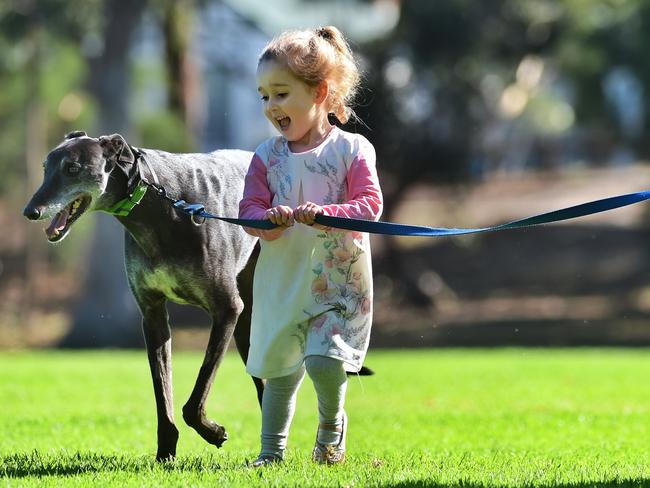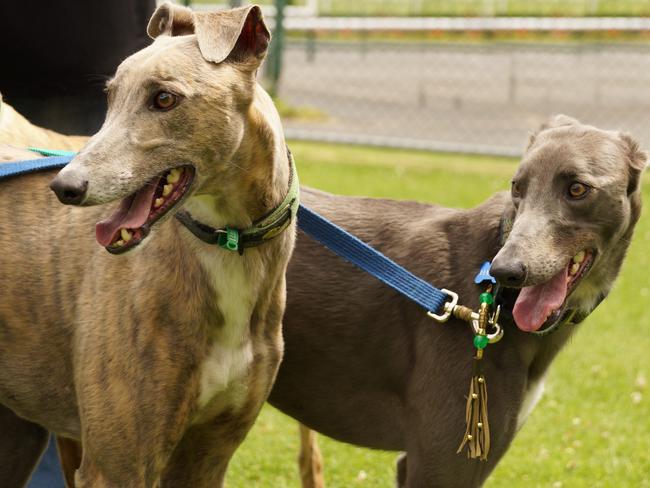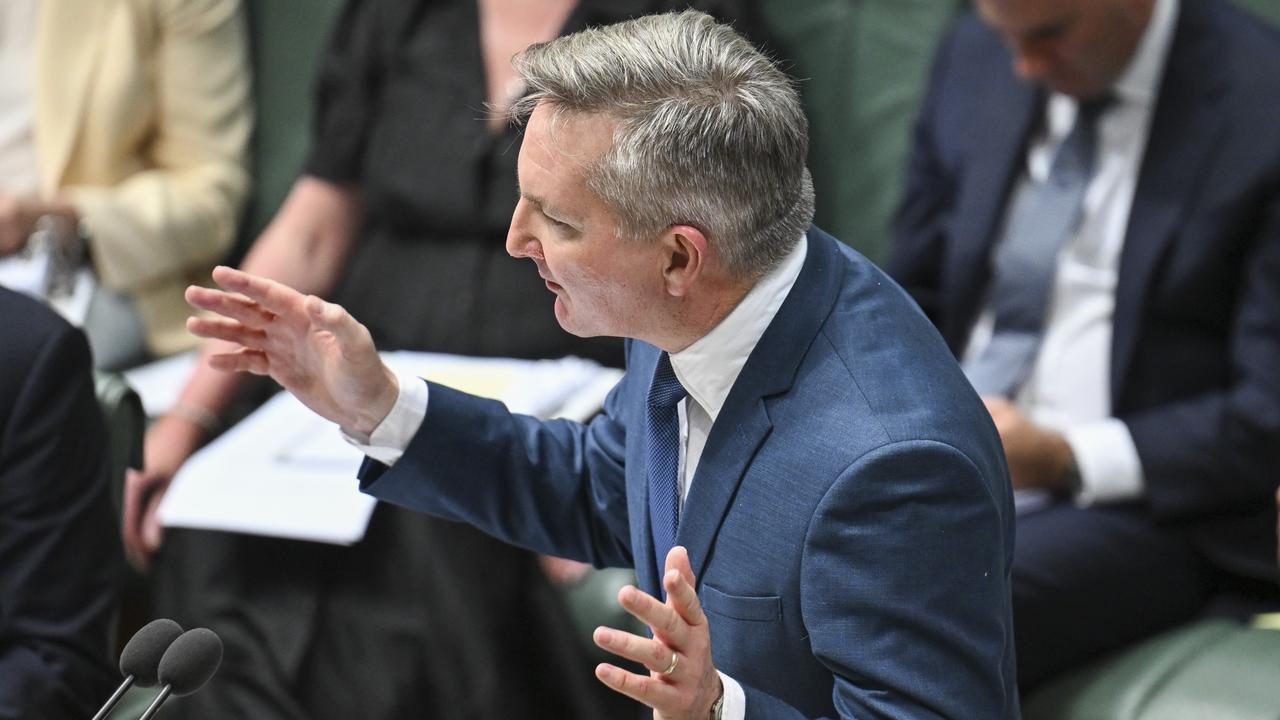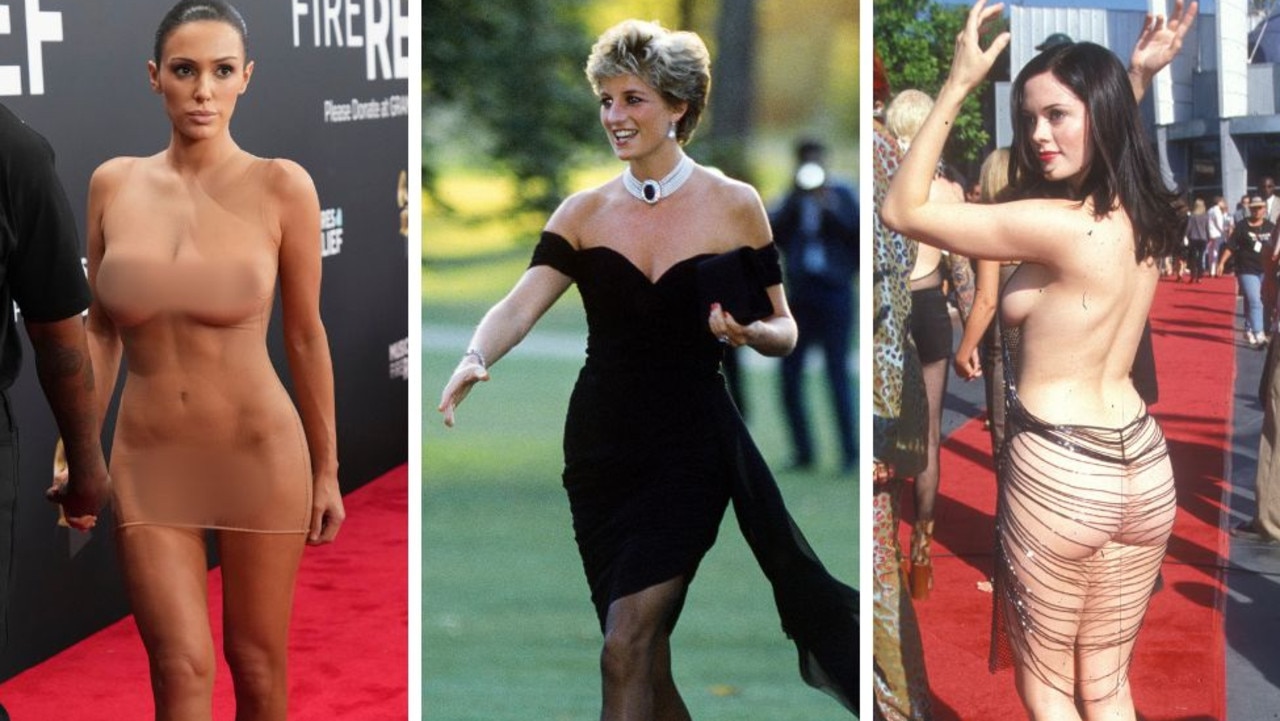Talking Point: Giving Tassie greyhounds a better life off the track
We have tougher rules and a fresh focus on rehoming greyhounds, says Belinda Lewis

Opinion
Don't miss out on the headlines from Opinion. Followed categories will be added to My News.
WHILE greyhound racing has drawn increasing attention for alleged shortcomings in its animal welfare practices, significant advances have been introduced that have largely escaped public attention.
Under new welfare rules introduced on March 1, greyhound owners must make every effort to find their greyhound a suitable long-term home.
Owners must keep evidence of their endeavours and greyhounds can no longer be euthanised without written permission from the Office of Racing Integrity.
Exemptions to this rehoming process are only on the basis of medical, legal or behavioural grounds.
Critically, a greyhound can now only be euthanised for behavioural reasons after it has undergone an assessment by an Office of Racing Integrity-approved person and only after the Office of Racing Integrity has signed off on the unsuitability report.
Further, a greyhound may be euthanised on medical grounds if a registered veterinarian certifies that the greyhound is suffering from an incurable condition or injury that causes significant pain or discomfort.
Finally, a greyhound may be euthanised to comply with a court order.
These are important changes that will improve the welfare of greyhounds in the state.
Tasracing funds the Greyhound Adoption Program, or GAP, which aims to rehome 150 greyhounds a year.
In 2019-2020, GAP rehomed 137 greyhounds (that figure was 89 in 2018-2019).
The recently acquired GAP facility at Mangalore by Tasracing can house 27 greyhounds at a time.
As at July 20, there were 22 dogs in the program — 20 greyhounds at the kennels and two dogs in foster homes.
There are 14 dogs on the waiting list, eligible for entry once mandatory wind-down is completed.
From March 1, 2020, greyhounds have been required to complete a mandatory 28-day wind-down period before being eligible to enter the program.

The number of dogs advertised on the GAP website is not indicative of the number of dogs in the program.
Only some of the dogs ready for adoption are advertised.
GAP has a waiting list of prospective new owners who have detailed their family and home structure.
When a suitable greyhound becomes available that matches the respective family’s lifestyle and home environment, that particular family is contacted. There is no need to advertise that dog.
The flow of greyhounds through the program is highly dependent on the individual greyhound and also on the previous work of owners or trainers preparing their greyhound for pet life.
Greyhounds that enter the program with minimal experience socialising with other dogs or walking quietly on lead without pulling, are sensitive to traffic, have issues getting in and out of the vehicle or issues with stairs will require longer in the program.
Likewise, greyhounds who do not pass their initial behaviour assessments will require substantially more time in the program as the GAP team works with these dogs to improve their behaviours.
It is not unusual for some dogs to require two to three months of intensive socialisation and enrichment before they may be deemed suitable for adoption.
If GAP has a number of these dogs in the program at the same time, the number of greyhounds available for adoption will drop substantially, and remain low until the dogs are deemed ready for adoption
The GAP process for transitioning a greyhound from a racing environment into pet life is rigorous. All greyhounds undertake multiple behavioural assessments and undergo individualised socialisation programs.
It is important to note that GAP Tasmania is the only greyhound adoption program in the country that does not conduct pre-assessments. We accept all greyhounds into our program. All other jurisdictions assess the dogs before entry, and those that fail are sent back to the owner to work on their behavioural issues before reassessment.
All greyhounds enter their new homes desexed (including a health check by a veterinarian), with up-to-date vaccinations, worming and flea treatment, their teeth polished, nails trimmed and microchip transferred to the new owner.
On the track, Tasracing is undertaking a review of its greyhound tracks with Professor David Eager, a nationally recognised expert in the field.
Track benchmarking and measurements are being recorded to ensure consistent racing surfaces and GPS mapping of the tracks taken in preparation for Professor Eager’s analysis of the design and maintenance regime of the tracks.
Professor Eager’s advice will focus on how to make existing tracks safer. This work is expected to be completed nexst month.
Belinda Lewis is Tasracing’s animal welfare manager.


